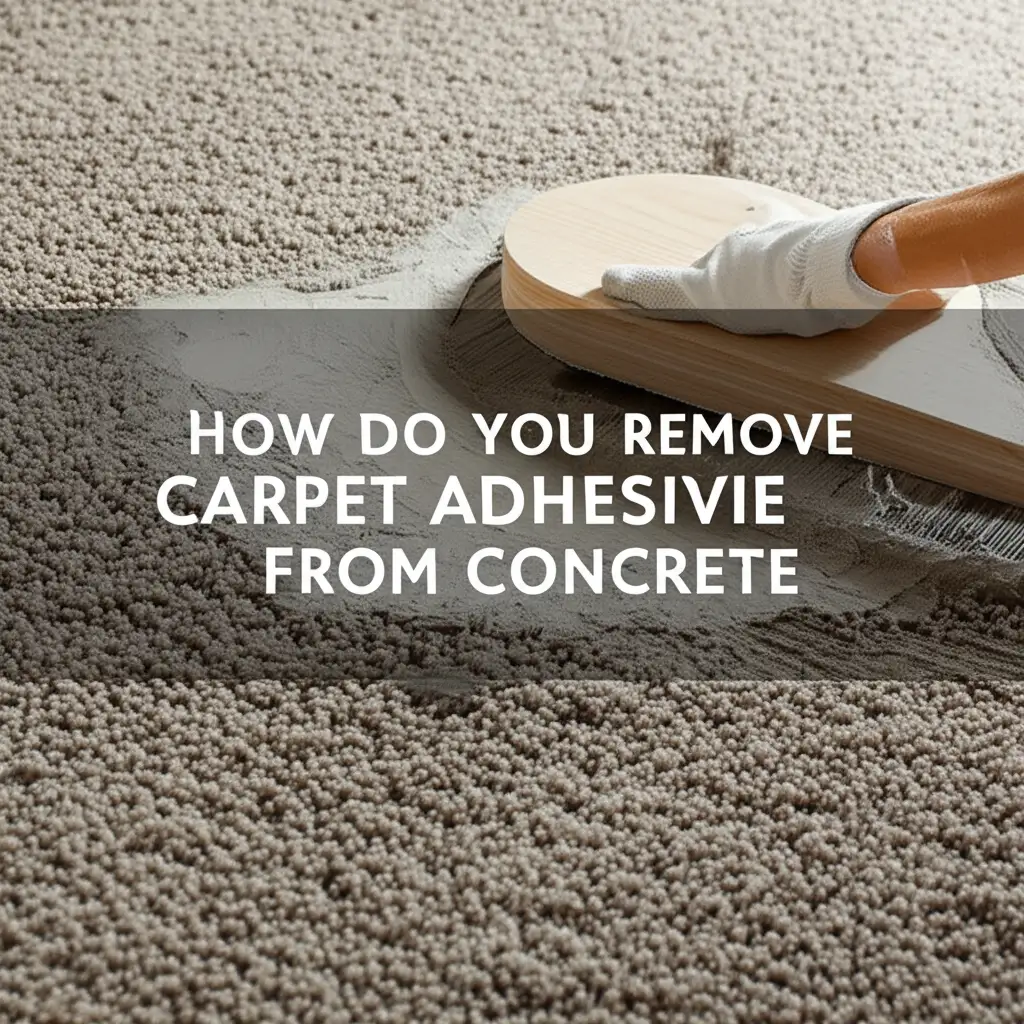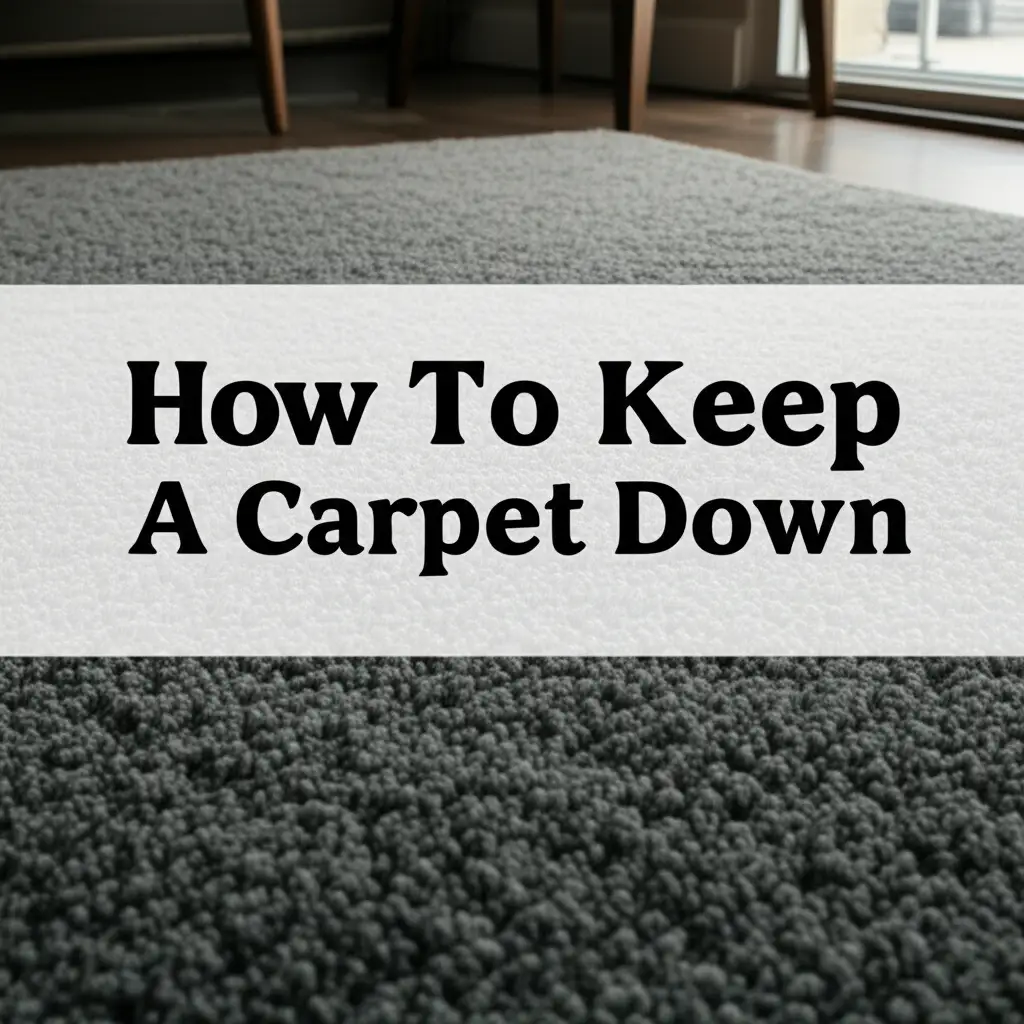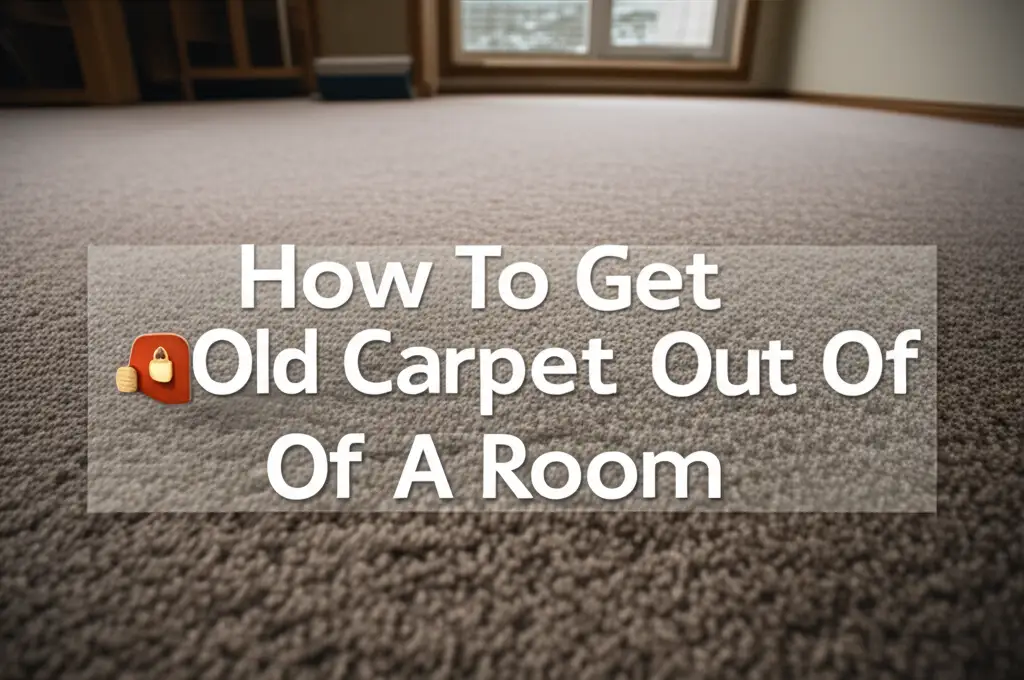· Tessa Winslow · Home Improvement · 13 min read
How To Cut Carpet Pad With Rubber Backing

Effortless Carpet Pad Cutting: Rubber Backing Made Easy
Starting a new flooring project often feels exciting. You picked out the perfect carpet. Now, you need to prepare the base. Cutting carpet pad with rubber backing is a crucial step. This pad provides comfort and extends your carpet’s life.
Many people wonder about the best way to handle this material. Rubber backing adds a unique challenge compared to other pad types. It is dense and can be tricky to cut cleanly. Knowing the right tools and methods makes a big difference. This article will show you exactly how to cut carpet pad with rubber backing. We will cover everything from selecting your tools to making precise cuts and staying safe.
Takeaway
Cutting carpet pad with rubber backing is simple with the right approach.
- Gather sharp tools, especially a utility knife.
- Prepare a clean, flat, and protected workspace.
- Measure and mark carefully for accurate cuts.
- Use a straightedge for consistent, straight lines.
- Prioritize safety by using fresh blades and wearing gloves.
To cut carpet pad with rubber backing, use a sharp utility knife with fresh blades. Place the pad rubber-side down on a protective surface. Measure and mark your cut line clearly. Press a straightedge firmly along the mark. Score the pad first, then make deeper cuts with controlled pressure until you cut through the material.
Understanding Your Rubber-Backed Carpet Pad
Working with carpet pad means knowing its properties. Rubber-backed carpet pad offers many benefits. It adds excellent cushioning underfoot. It also helps with sound insulation. This type of pad typically lasts a long time.
Rubber backing provides stability. It prevents the carpet from shifting once installed. This stability comes from its dense nature. This density also impacts how you cut it. Foam pads are softer and tear more easily. Rubber-backed pads require a sharper tool and a different technique for clean cuts.
Different types of rubber backing exist. Some are solid rubber, while others are waffle-patterned. Each type has its own feel. Despite variations, the cutting method remains largely the same. You need to approach it with precision. Understanding the pad helps you anticipate its behavior during cutting. This knowledge leads to better results. It ensures your carpet project looks professional. A good pad makes a big difference for your new carpet. You can learn more about how crucial these layers are by understanding what purpose a rug pad serves.
Gathering Essential Tools for Precision Cutting
Having the right tools makes any job easier. Cutting carpet pad with rubber backing is no exception. Good tools ensure clean lines and reduce frustration. You will achieve a professional finish. I always start by laying out everything I need.
First, you need a heavy-duty utility knife. This is your most important tool. Look for one with a comfortable grip. It should allow for strong, consistent pressure. Next, you need plenty of fresh, sharp blades. Dull blades are dangerous and make cuts ragged. I cannot stress this enough: always use a new blade. This makes cutting faster and safer. A good straightedge is also crucial. It ensures perfectly straight cuts. A four-foot or six-foot metal ruler works well. You can also use a carpenter’s square for shorter cuts.
A reliable tape measure is essential. You need to measure accurately. A chalk line or a thick marker helps mark your cut lines clearly. Safety gear is non-negotiable. Always wear heavy-duty work gloves. These protect your hands from cuts. Safety glasses are also wise. They shield your eyes from any debris. Lastly, have a sturdy cutting surface. A large piece of plywood or cardboard protects your floor. Do not cut directly on your finished flooring. You will regret it.
Preparing Your Workspace for Safe and Efficient Cuts
A well-prepared workspace sets the stage for success. It ensures safety and efficiency. Taking a few minutes to prepare saves you time later. I always clear the area completely first. This gives me plenty of room to work.
First, ensure the room is clean. Sweep or vacuum any dust or debris. This prevents your pad from getting dirty. It also provides a smooth surface for cutting. Second, ensure good lighting. You need to see your marks clearly. Natural light is best, but bright overhead lights work too. If you cannot see, your cuts will be off. Next, lay down a protective layer. I use large sheets of cardboard or plywood. This prevents cuts on your subfloor or existing flooring. You do not want knife marks on your new hardwood.
Unroll the carpet pad completely. Let it sit for a while. This allows the pad to relax and flatten out. A flat pad is much easier to measure and cut accurately. If it stays curled, your measurements will be wrong. Position the pad rubber-side down. The rubber side offers more friction against your protective surface. This helps hold the pad in place during cutting. This stability is important for precise work. Make sure you have enough space to move around the pad freely. You need to be able to access all edges.
Step-by-Step Guide: How to Cut Rubber Carpet Pad
Now we get to the core process. Cutting carpet pad with rubber backing requires a methodical approach. Follow these steps for clean, accurate results. I find breaking it down makes it much simpler.
1. Measure Your Space: Begin by measuring the room or area where the pad will go. Use your tape measure for accuracy. Measure length and width in several spots. Rooms are rarely perfectly square. Account for any irregularities. I always add a small amount, like half an inch, to each dimension. This gives me a little extra to trim. It is always better to have too much than too little.
2. Transfer Measurements to the Pad: Unroll your pad on your prepared cutting surface. Make sure the rubber side faces down. Transfer your measurements onto the pad. Use a dark marker or chalk line. Mark multiple points along the intended cut line. This helps ensure your straightedge aligns correctly. Take your time with this step. Precise marking leads to precise cuts.
3. Position Your Straightedge: Align your straightedge with the marks you made. Make sure it extends beyond both ends of the cut line. This gives you a clear guide for your knife. Press down firmly on the straightedge. You want to prevent any movement during the cut. This is critical for a straight line. If it slips, your cut will be crooked.
4. Score the Pad: Pick up your utility knife with a fresh blade. Hold the knife at a slight angle, around 30 degrees. This helps the blade slide through. Apply moderate pressure and score along the straightedge. Do not try to cut all the way through on the first pass. This initial score creates a groove. It guides your blade for subsequent passes. The rubber can be tough, so scoring is key.
5. Complete the Cut: After scoring, make additional passes. Increase the pressure with each pass. Follow the groove you created. You will feel the blade cutting deeper into the rubber. Keep your straightedge firmly in place. Continue until you cut completely through the pad. This may take two or three passes. Once you cut through, separate the excess material. You now have a perfectly cut piece of carpet pad. For larger projects, such as replacing existing floor materials, these cutting skills are directly applicable. Consider how these steps align with broader renovation tasks, such as understanding how to replace carpet in a 2002 Suburban with rubber matting.
Mastering Precision and Achieving Clean Edges
Achieving clean, precise edges elevates your installation. It looks more professional. It also makes subsequent steps easier. I focus on these details for every project. A good cut integrates seamlessly.
1. Keep Your Blade Sharp: This is the most important tip. A dull blade tears the pad. It also requires more force. This increases the risk of slipping. Always use a new blade for each major cut or section. Change blades frequently. Blades are inexpensive. Injuries are not. A sharp blade glides through the rubber smoothly. It leaves a clean, crisp edge.
2. Use Consistent Pressure: Apply steady, even pressure on the knife. Do not push too hard initially. Let the blade do the work. Gradual pressure over multiple passes is better than one heavy push. This technique provides control. It prevents the knife from veering off course. Consistent pressure ensures a straight cut.
3. Maintain a Stable Straightedge: Your straightedge is your guide. Hold it down firmly. Use your body weight if needed. Some people kneel on it. This prevents any movement. A wobbly straightedge means a wavy cut. Consider clamping it down for very long cuts. This adds an extra layer of stability.
4. Cut Beyond the Line: Extend your cut slightly beyond the actual measurement. This ensures the entire line is cut through. You do not want a small uncut section at the end. It is much easier to trim a tiny bit later. This slight overcut prevents tearing at the ends.
5. Practice on Scraps: If you are new to this, practice first. Use a small scrap piece of pad. Make a few test cuts. This helps you get a feel for the material. It also lets you practice your technique. Practice helps build confidence. You can experiment with different angles or pressures. This preparation ensures your main cuts are perfect. Sometimes you might need to join pieces of pad, and good, clean cuts are essential for proper adhesion, similar to how you might tape an area rug to a carpet pad.
Prioritizing Safety When Cutting Carpet Pad
Safety is paramount when working with sharp tools. Injuries can happen quickly. Taking precautions prevents accidents. I always put safety first. Your well-being matters most.
First, wear appropriate personal protective equipment (PPE). Heavy-duty work gloves are a must. They protect your hands from slips and cuts. Safety glasses protect your eyes from debris. Small pieces of rubber or blade fragments can fly. Second, ensure your cutting surface is stable. The pad should not slip during the cut. Working on a flat, even surface prevents wobbling. Never cut on an unstable table or uneven floor.
Always cut away from your body. This is a basic but critical rule. If the knife slips, it will move away from you. This prevents severe injuries. Do not try to cut towards yourself. Keep your free hand away from the blade’s path. Position it safely behind the cutting line. Never use your hand as a guide. A straightedge exists for this reason.
Use a fresh, sharp blade. A dull blade requires more force. This increases the chance of slippage. Change blades often. They dull quickly, especially with rubber backing. Dispose of old blades safely. Use a blade disposal container or wrap them securely. Do not throw loose blades in the trash. Store your utility knife safely after use. Retract the blade fully. Keep it out of reach of children. These steps ensure a safe work environment.
Handling and Disposing of Excess Material
After cutting, you will have leftover pad. Knowing how to handle and dispose of it is important. Proper management keeps your workspace clean. It also contributes to responsible waste disposal. I never just leave scraps lying around.
First, neatly roll up any large excess pieces. These can be useful for smaller projects later. Perhaps you need a small rug pad. Or maybe you messed up a cut and need a patch. Rolling them keeps them tidy. Store them in a dry, cool place. This prevents degradation. You can use old sheets or plastic wrap to cover them. This keeps dust off.
For smaller scraps, gather them quickly. They can be tripping hazards. Small pieces are also hard to sweep up later. Bag them immediately. Use heavy-duty trash bags. Rubber can be surprisingly heavy. Consider how much rubber-backed carpet weighs when bagging large amounts. You may need multiple bags.
Disposal options vary by location. Check with your local waste management facility. Some areas allow carpet pad in regular household trash. Others may require special disposal. Large quantities might need a trip to a landfill or recycling center. Some recycling centers accept carpet padding. This is the most environmentally friendly option. They might process it into new products. Inquire about recycling programs in your community. Responsible disposal is part of finishing the job correctly.
FAQ Section
What is the best type of knife for cutting rubber-backed carpet pad?
The best tool is a heavy-duty utility knife with a retractable blade. Ensure it has a comfortable grip for control. Always pair it with new, sharp, heavy-duty blades. These blades are designed for tough materials. They cut through dense rubber more effectively.
Can I use regular scissors to cut carpet pad with rubber backing?
No, regular scissors are not suitable for rubber-backed carpet pad. The rubber backing is too dense and will quickly dull or damage your scissors. They will also lead to jagged, uneven cuts. A utility knife provides the necessary sharpness and strength.
How do I cut carpet pad around curves or odd-shaped obstacles?
For curves or obstacles, create a template first. Use paper or cardboard to trace the shape of the obstacle. Cut out the template, then transfer it onto the carpet pad. Use your utility knife to carefully cut along the traced line, making small, controlled cuts.
Should I cut the carpet pad slightly smaller or larger than the room dimensions?
Always cut the carpet pad slightly smaller than the room dimensions, by about 1/2 inch from each wall. This creates a small gap around the perimeter. This gap allows the carpet to be tucked properly. It also prevents the pad from buckling up against the walls.
How can I ensure my cuts are perfectly straight?
To ensure perfectly straight cuts, always use a long, sturdy straightedge. A metal ruler or carpenter’s square works well. Press down firmly on the straightedge to prevent it from moving. Make multiple shallow passes with a sharp utility knife, guiding the blade along the straightedge.
What should I do if my knife gets stuck while cutting?
If your knife gets stuck, do not force it. This can lead to the blade breaking or slipping, causing injury. Instead, lift the knife, reposition it, and try again with less pressure. Consider changing to a fresh, sharper blade. Often, a dull blade is the cause of sticking.
Conclusion
Cutting carpet pad with rubber backing does not need to be a daunting task. You now have the knowledge and steps to do it effectively. With the right tools and techniques, you will achieve professional results. Remember, precision and safety are your best friends in this project.
Start by preparing your workspace. Gather your sharp utility knife and a sturdy straightedge. Measure and mark your lines carefully. Use consistent pressure as you cut through the pad. Always prioritize your safety. Wear gloves and cut away from your body. Dispose of your excess materials responsibly. Following these guidelines will make your carpet installation smoother. You will feel proud of your perfectly prepared subfloor. Your new carpet will look fantastic because of your careful work.





